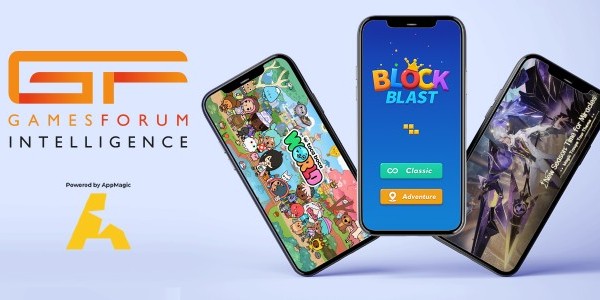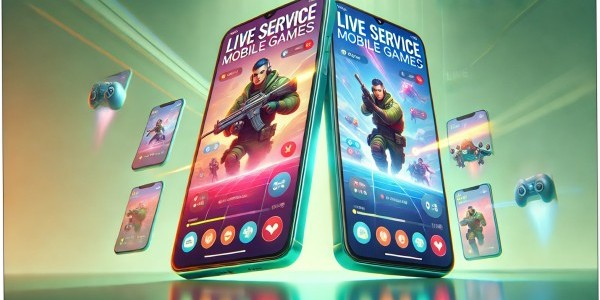Beyond Language: A Guide to Video Game Localization

By Bridgette Janicki, Dynamic Language
Video games have come a long way since the first programs were created in the 1970s. Now they are a global phenomenon that is expected to grow to over 90 billion USD by 2020, a nearly 11.19 billion increase from 2017. Today’s games craft a story that transports players into a virtual reality due to photorealistic graphics and interactive elements. As a result, the demographic of gamers is booming and reaching every corner of the world. This industry expansion has caused great demand for localized versions of games to capitalize on global markets.
Localization for the gaming industry is the process of adapting a video game to a target audiences' requirements. Game localization (gameloc) means translating not only the language but the game’s technical, marketing and story elements while maintaining the theme and tone of the game's storyline.
However, this can be a challenging process as story elements of a video game include everything the player sees and hears on the screen. The technical elements consist of code, text, UI, graphics, and operations of the game. That is just the game itself. The marketing portion refers to the posters, packaging, website, media campaigns and more. The combination of these elements requires thorough planning and experienced localization experts when preparing to launch a game to international markets.
Video Game Localization: Challenges
The expansion of the gaming industry has opened a plethora of opportunities for both developers and localization teams. There are more than 2.5 billion video gamers across the globe with the Asia Pacific market deemed the largest consumer base bringing in a revenue stream of 51.2 billion USD. The growth and development of video games, and wide-reaching appeal of mobile games has developers seeking game localization to increase sales and enter into global markets. However, gameloc does come with the following challenges, and it is important to follow best practices when deciding on whether to localize a game.
Management Problems
- Gaming companies may not properly judge or plan for the market’s reaction to their release
- They may not prioritize localization. So, when more games are released, and budget issues arise, many companies go only for raw machine translation rather than transcreation.
- They may fail to communicate their brand values and target audience to localizers. This means the localized game versions may not reflect the company’s vision or resonate with the intended audience.
- Developers often delay the process of localization until there is little time to execute their plan, causing inconsistent and inaccurate localized versions.
Culture-Based Errors
Acclimatization: It’s difficult to localize a video game until localizers understand the world in which it is set. If they don’t familiarize themselves with all of its elements, they would not be able to capture its essence. The game Assassin’s Creed Unity has many instances of historical inaccuracy. Although the game remained popular, it caused outrage in some circles of fans that expect historical accuracy and abhor anachronisms.
Cultural adaptation: Localization is adapting something to suit regional and cultural expectations. It can be difficult and controversial, as in the case of the games Fire Emblem Fates and Fallout 3.
Context: Many developers don’t provide localizers with context for their translations. They also may not provide enough background information about the characters or the game universe.
Software Issues
Video games are software-based, which means that software issues affect their localization.
- If files sent to translators have translatable text mixed with code, they might change or delete code elements. This will disrupt the game.
- Developers compose or concatenate strings, such as ‘Hello! , you have reached Level ’. Although such concatenation works well in English, foreign languages may not be amenable to it.
- If the terminology used is not consistent in all languages, it will confuse the players and make the game less enjoyable. For example, in the English translation of the Japanese game Street Fighter II, players were told they must defeat Sheng Long to progress. Many took it to be a character name but it was a mistranslation of Rising Dragon Fist, a character’s attacking move.
- The translated text might not fit in the space allotted for the original language text because of differences in dimensions.
- Images with non-editable or hard-coded text may be difficult to localize. Source files for the original graphics can be hard to locate. Localizers might need to manually edit the images or even recreate them, which may be time-consuming, expensive and terrible.
- Placeholders or small pieces of code, which look like random symbols or capitalized words and are meant to be later replaced by text, are translated or altered. This results in the video game not working properly.
- The game content may have unresolved flaws or bugs, which reflect in localized versions. They should be tested extensively before launch, both for functional and linguistic testing.
Language Issues
Some gaming companies hire their own linguists to translate content in their games. Often these no-professional linguists may know gaming, but have no experience in professional localization. They may face many potential issues.
- Few non-professional linguists are familiar with Computer Aided Translation tools that make the process massively faster and more cost-efficient, costing time and money.
- Localized versions can have awkward or idiomatic translations of the interface and instructions, as in the case of the infamous Japanese game Zero Wing.
- Translations may not convey hidden meanings, metaphors, and gender.
- Measurement units and currency, date and address formats can be left unchanged.
- Quotes can be mistranslated.
- Profanity and slang can be translated without regard to region or culture.
- Polite forms of address, common in the translated language, can be disregarded.
Any kind of mistake from the list above can result in localized versions that not only make the user experience negative but can also negatively impact the brand of the company that produced the game.
Video Game Localization: Best Practices
Gaming companies and localization providers should follow a few best practices to ensure successful video game localization.
Gaming Companies
- Research the gaming scene in the countries where you intend to launch the game to check if your games are relevant and culturally acceptable there.
- Decide the material that should be localized and the game’s distribution channels.
- Find a localization partner, who has linguists that play video games and know the niche terms gamers use.
- Provide your localization partner the game’s background information, such as its context and history. Also, it is helpful to present a style guide and tone specifications and any other linguistic assets like glossaries.
- Designate a project lead on your team to interface with the project manager on the localization side who together will keep the process on schedule and ensure that all issues are resolved.
- Ensure the game has a flexible design and that all game assets and content that needs to be localized are separated from the code before being sent for localization.
- Institute a quality assurance process to check for consistency, clarity and accuracy and inform your localization partner if you will be providing internal linguistic reviews.
- Test the localized version rigorously by choosing experienced gamers and linguists that are local to the target countries
- Use feedback to improve. Ensure that all flaws and bugs reported by testers are addressed.
Games are much more than just software. They are interactive stories that let players escape to an imaginary world of adventure and fun. It is not surprising that players expect the localized versions to capture the essence of the original version and they feel as if the game was created in their language. With the right localization partner that exact result can be captured.











